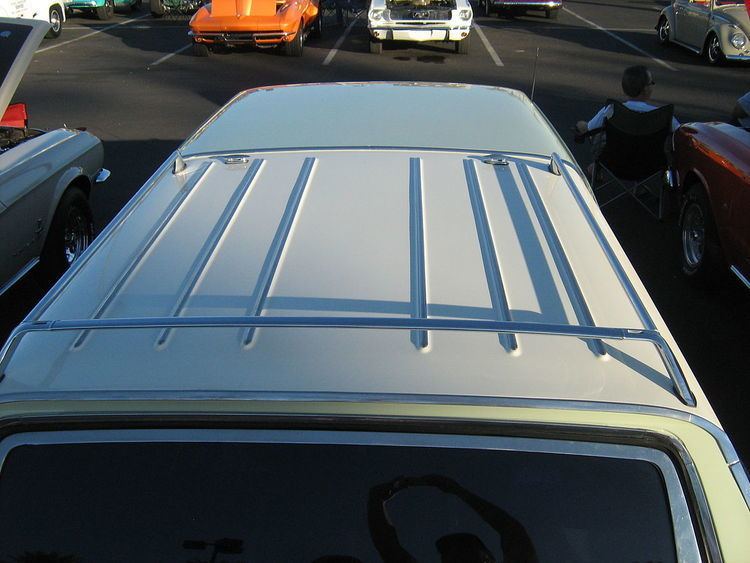 | ||
A roof rack is a set of bars secured to the roof of a motor car. It is used to carry bulky items such as luggage, bicycles, canoes, kayaks, skis, or various carriers and containers.
Contents
There is a long history of the use of roof racks and their designs. They allow users of an automobile to transport objects on the roof of the vehicle without reducing interior space for occupants, or the cargo area volume limits such as in the typical car's trunk design.
The three most common components of a roof rack system are (side) rails (or tracks), towers which clamp or otherwise attach to the rails, and mounts, which secure the bulky items to the rack system.
Older roof racks were usually mounted directly to the gutter surrounding the roof line. More modern vehicles, which do not have gutters, can often have a roof rack installed by attaching hooks to the top of the door frames.
Some automobiles have fittings for proprietary racks which mate with reinforced lugs in the roof. Other vehicles have a factory-installed permanent roof rack. Roof racks increase air resistance and in the US, roof racks increased overall fuel consumption by approximately 1%.
Truck bed rack is a derivation of a roof rack designed to be installed over the bed of a pickup truck. The construction of a bed rack is very similar to a roof rack, but features tall tubes (legs) that allow to lift the rack platform higher above the bed surface and leave space for cargo inside of the bed. Truck bed racks are often used in a combination with roof racks and form a long cargo platform that allows transportation of oversized items. They are commonly used in constructions and recreation as a base for various gear and tents just like the roof racks.
Cargo boxes and cargo trays
Automotive cargo transportation and stabilizing systems are widely represented by hard shell cargo boxes and cargo trays. They are designed to be used with base roof racks and attach to the load bars with a help of universal locking fasteners. Cargo boxes are now usually made of lightweight metal or hard plastic materials to withstand weather conditions and to protect cargo from thieves. Cargo trays provide a large open cargo platform, which allows the transportation of oversized objects or bags that may not fit in hard shell cargo boxes. Items that are loaded onto such trays are exposed and need to be securely attached.
History
Until the late 1970s, almost all regular passenger automobiles had rain gutters. These gutters are formed by the welded flange (raised rim or lip) on the left and right sides of the car's metal roof panel. This made attaching an accessory or aftermarket roof rack a relatively simple process.
The first mass production cars without any visible rain gutters were the 1975 AMC Pacer and Chevrolet Monza. Other vehicles were introduced on the market with hidden rain gutters during the 1980s, and by 1990, vehicles with external rain gutters were becoming rare. Roof rack suppliers developed new products and systems designed to securely attach to various types of automobile roofs.
